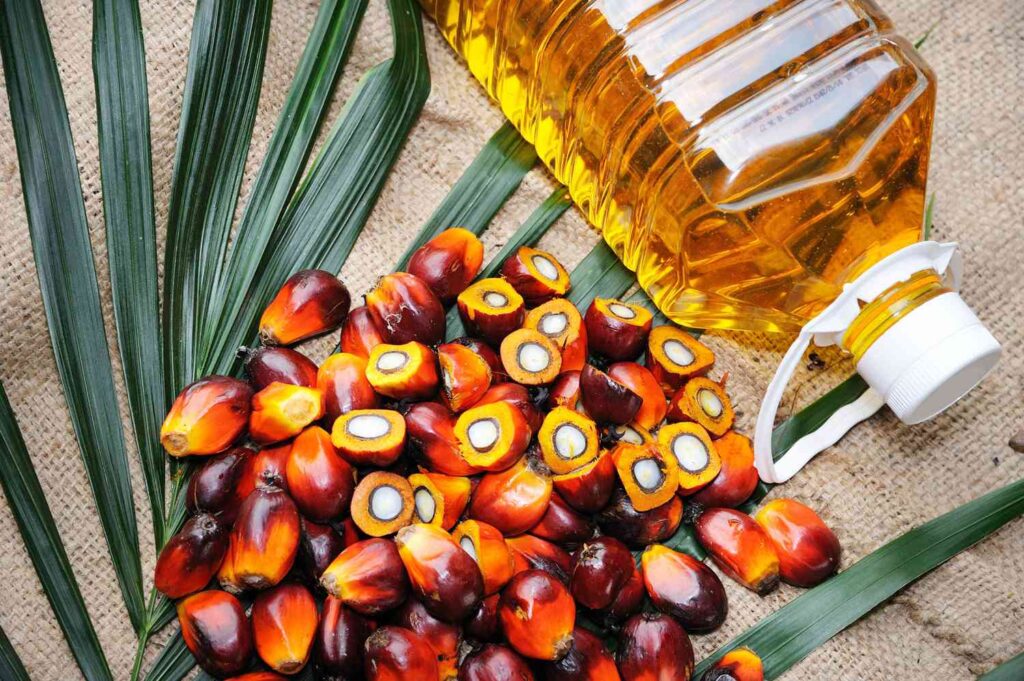Palm Oil: Evolution, Controversy, and Global Dominance

Palm Oil: Evolution, Controversy, and Global Dominance
Palm oil, derived from the pulp of oil palms, is often called red palm oil due to its reddish-orange hue. It has become one of the most widely used and affordable oils, making up about one-third of global plant oil production. The primary source of palm oil is the Elaeis guineensis tree, native to coastal regions of West and Southwest Africa, including Angola, Gabon, Liberia, Sierra Leone, and Nigeria. A related species, Elaeis oleifera, exists in South America but is seldom cultivated commercially, though hybrids of the two species are sometimes used.
In recent times, oil palm cultivation has expanded to Southeast Asia, particularly Malaysia and Indonesia, which now account for over 80% of global palm oil production. The first large-scale plantation in Malaysia was established in 1917 at the Tennamaram Estate in Selangor.
Elaeis guineensis originated in West Africa, where it has been used as a staple food crop for around 5,000 years. Historical evidence, such as findings in Egyptian tombs where individuals were buried with containers of palm oil, underscores its significant societal value. Palm oil’s international market presence surged notably during the British Industrial Revolution and global trade expansion, driven by European settlers and entrepreneurs who saw its potential for manufacturing soaps, lubricants, and edible oils.
Palm oil is associated with both health advantages and potential risks. It is rich in vitamin E tocotrienols, potent antioxidants that can help lower cholesterol levels. Comprising 50% saturated fatty acids, 40% monounsaturated fatty acids (MUFA), and 10% polyunsaturated fatty acids, palm oil’s high MUFA content is beneficial for heart health. Research suggests that MUFA can help maintain a healthy cholesterol balance by potentially increasing HDL (good cholesterol) without significantly elevating LDL (bad cholesterol). Unlike butter, palm oil is less saturated and does not contain harmful trans fats.
Neelanjana Singh, a nutrition expert, emphasizes palm oil’s versatility, cost-effectiveness, and stability, making it a preferred choice for the food industry. Dr. Arun Kumar, a pediatrician and nutrition specialist, notes that palm oil does not negatively impact lipid profiles by raising bad cholesterol levels and that managing high triglyceride levels is better achieved by reducing refined carbohydrate intake.
Despite its health benefits, palm oil’s production raises environmental concerns due to deforestation and the destruction of habitats for endangered species. Its saturated fat content is also linked to heart diseases.
Palm oil is widely used in India due to its affordability and versatility. CK Mishra, former Secretary of Environment and Health, highlights India’s goal to decrease reliance on vegetable oil imports. The market size of palm oil in India was estimated at $7.3 billion in 2022, with a projected compound annual growth rate (CAGR) of 5% from 2023 to 2030. The National Edible Oil Mission-Oil Palm (NMEO-OP), introduced in August 2021, aims to reduce India’s import dependency and support farmers’ livelihoods.
Palm oil is extensively used in food products, cosmetics, and biofuel both in India and globally, valued for its lack of odor, colorlessness, and stability at high temperatures, making it ideal for large-scale production.







